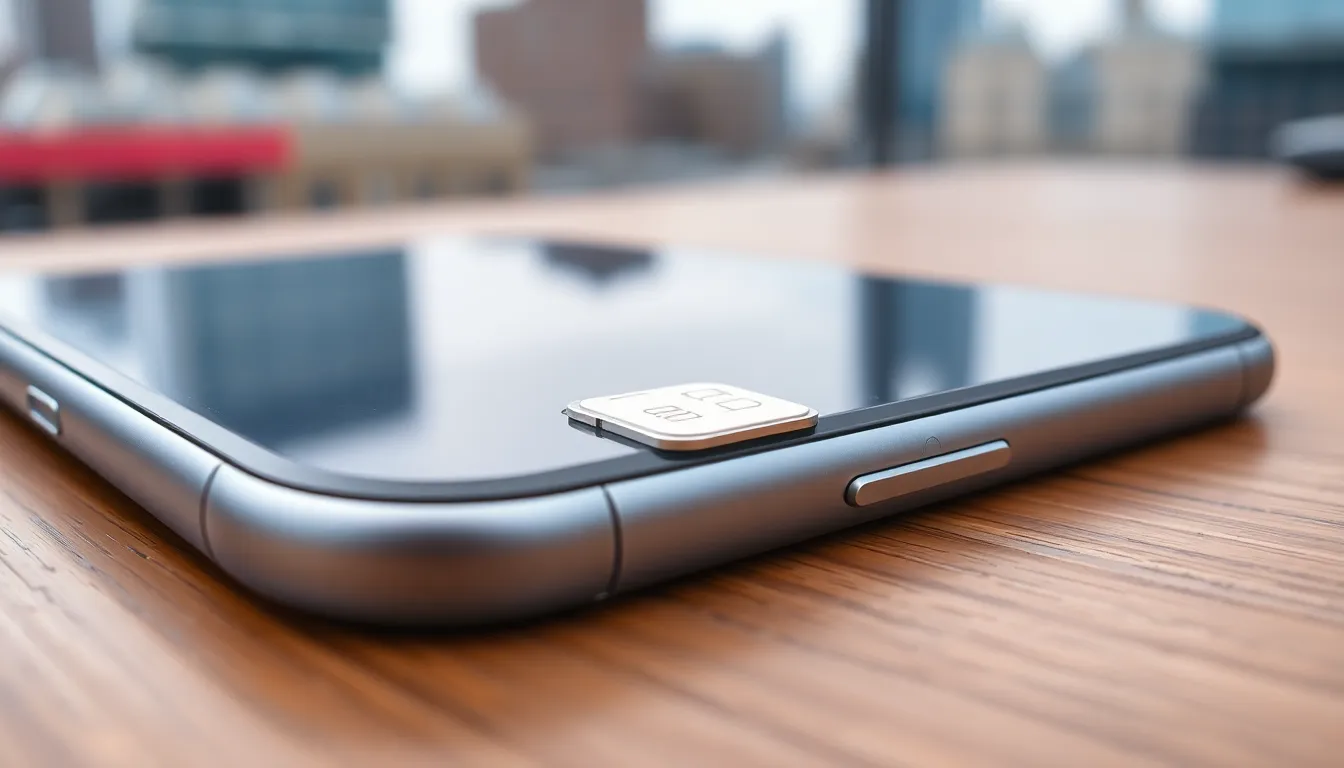In a world where smartphones are practically extensions of ourselves, the iPhone 7 stands out as a classic. With its sleek design and reliable performance, it still has a loyal fan base. But as technology evolves, so do our needs. Enter the eSIM—a digital revolution that promises to simplify how we connect. But wait, can the iPhone 7 join this futuristic party?
As users contemplate upgrading their connectivity game, the question arises: is the iPhone 7 eSIM compatible? Spoiler alert: it’s not. While the iPhone 7 may not support this cutting-edge feature, it still offers a solid experience for those who prefer the traditional SIM card route. So, if you’re hoping to dive into the world of eSIMs, you might need to look a little further down the Apple lineup.
Table of Contents
ToggleOverview of eSIM Technology
eSIM technology represents a significant advancement in mobile connectivity. Unlike traditional SIM cards, eSIMs are embedded directly into devices, allowing users to activate a cellular plan without a physical card. This integration offers greater flexibility for users, enabling them to switch carriers and manage multiple plans easily.
Connectivity becomes more seamless with eSIM capabilities. Many new smartphones support eSIM, allowing users to download carrier profiles digitally. This process eliminates the need for physical exchanges, which can be time-consuming.
Cost savings often accompany eSIM technology. Users may find more competitive pricing and promotional plans from various carriers, enhancing their options for mobile services. Additionally, the ability to have multiple accounts on one device benefits frequent travelers who might require different numbers in various regions.
Security features are enhanced through eSIM as well. Since they are embedded within the device, eSIMs are less vulnerable to theft compared to removable SIM cards. This security can provide peace of mind for users concerned about data protection.
Overall, eSIM technology streamlines and modernizes the mobile experience. While many contemporary devices embrace this technology, the iPhone 7 does not support it, directing users toward newer models for eSIM compatibility. Those who value traditional SIM usage can still enjoy the performance and reliability that the iPhone 7 offers.
Compatibility of iPhone 7 with eSIM

The iPhone 7 does not support eSIM technology. Users seeking the benefits of eSIM must explore newer models from Apple.
Technical Specifications
iPhone 7 users rely on the physical nano-SIM card for connectivity. The device features a single SIM slot, which limits flexibility in managing multiple plans. While the model excels in performance with its A10 Fusion chip, users can’t switch carriers without replacing the SIM card. This specification indicates a significant difference from eSIM-compatible devices that allow seamless carrier transitions. Battery life, cameras, and storage remain impressive, but the lack of eSIM compatibility restricts use in modern mobile environments.
Carrier Support
Most major carriers continue to support iPhone 7 with traditional SIM cards. Compatibility varies by region, so it’s important to check with local providers. Some carriers offer prepaid and postpaid plans for iPhone 7 users. The phone operates on GSM networks primarily, which influences the choice of carrier options. Users can experience reliable service under supported networks, but flexibility falls short compared to eSIM-enabled devices. For those prioritizing the latest mobile connections, considering newer iPhone models may be beneficial.
Benefits of Using eSIM
Using eSIM technology brings notable advantages for mobile users. The ability to manage cellular plans without a physical SIM card simplifies the activation process and enhances flexibility.
Flexibility and Convenience
Flexibility stands out as a primary benefit of eSIM. Users can switch carriers effortlessly, avoiding the hassle of acquiring a new SIM card. Changing plans takes only a few minutes, allowing adjustments for personal or travel needs. This convenience extends to managing multiple plans simultaneously. For frequent travelers, accessing local carriers without replacing SIM cards proves advantageous. Users enjoy the freedom to customize their mobile experience based on individual requirements.
Dual SIM Functionality
Dual SIM functionality offers another key benefit associated with eSIM technology. Many smartphones equipped with eSIM support use one physical SIM and one eSIM, which enhances connectivity options. This setup provides users the ability to have work and personal numbers on a single device. Switching between numbers occurs seamlessly, allowing users to maintain separate communication channels. Both personal and business calls can be managed without the need for multiple devices. This functionality optimizes usability and caters to different aspects of users’ lives.
Limitations of iPhone 7 eSIM Support
The iPhone 7 lacks eSIM compatibility, presenting several limitations for users interested in modern mobile connectivity. Notably, some users may encounter regional variations in carrier support. In certain areas, carriers continue to rely solely on traditional SIM cards, providing limited options for those with an iPhone 7. Users may find that certain features associated with eSIM technology, such as dual SIM functionality, are unavailable in their region. This limitation affects the overall versatility of managing multiple lines and plans for frequent travelers or business professionals.
Software requirements also play a role in limiting the iPhone 7’s eSIM functionality. Specific software updates enable eSIM capabilities in newer models, ensuring compatibility with the latest apps and services. However, the iPhone 7 does not support these updates, which restricts access to advanced mobile features. Users may discover that as software evolves, the device becomes increasingly disconnected from emerging technologies. Overall, the lack of eSIM support in the iPhone 7 significantly curtails its adaptability in a rapidly changing mobile landscape.
While the iPhone 7 remains a reliable device with impressive performance its lack of eSIM compatibility limits its appeal in today’s mobile landscape. Users seeking the flexibility and convenience that eSIM technology offers will find themselves at a disadvantage with this model. As mobile connectivity continues to evolve the advantages of eSIM are becoming increasingly important. For those who prioritize advanced features and the ability to manage multiple plans seamlessly exploring newer iPhone models is a wise choice. The iPhone 7 serves its purpose well but it may not meet the needs of users looking for modern connectivity solutions.


